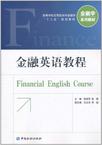金融英语教程
2011-8
中国金融出版社
张铁军 主编
263
《金融英语教程》内容新颖实用,不仅涵盖了货币、国际金融国际结算、证券、会计、保险等金融学科的主要方面,而且结合最新资料介绍了我国金融体系以及国际货币基金组织等国际金融机构的改革和发展,并对金融危机的类型、原因以及由2007年美国次贷危机引发的全球金融危机进行了较深入的分析。
各章由学习目标、课文、词汇表、注释和习题五个部分组成,章节的结构设计有助于学生全面地通过英语掌握金融知识,积累专业词汇,提高阅读水平。此外,各章练习设计能够帮助学生巩固金融知识和语言点。注释部分尽可能对难点进行了阐释,有助于教师授课和学生自学。
《金融英语教程》适合作为高校金融或经济相关专业的金融英语教材,也可作为金融专业英语证书考试(FECT)的辅助用书。
Chapter 1 Money
1.1 Definition of Money
1.2 Types of Money
1.3 Functions of Money
1.4 Interest and Interest Rate
1.5 Money Supply
1.6 China's Monetary System
Exercises
Chapter 2 Foreign Exchange
2.1 Definitions and Quotations
2.2 Foreign Exchange Transactions
Exercises
Chapter 3 Balance of Payments
3.1 The Definition of BOP
3.2 The General Principle of BOP
3.3 The Components of Balance of Payment Statement
3.4 Equilibrium of BOP
Exercises
Chapter 4 International Monetary System
4.1 The Gold Standard
4.2 Bretton Woods System
4.3 The Jamaica System
4.4 The Present and the Future
Exercises
Chapter 5 Financial Market
5.1 Introduction
5.2 Money Market
5.3 Capital Market
Exercises
Chapter 6 Securities
6.1 Overview
6.2 Stock
6.3 Bond
Exercises
Chapter 7 Loans
7.1 Introduction
7.2 Major Loan Categories
7.3 Loan Classification by Risk
Exercises
Chapter 8 Accounting
8.1 Introduction
8.2 Accounting Principles
8.3 Accounting Equation
8.4 Double Entry Bookkeeping System
8.5 Financial Statements
Exercises
Chapter 9 International Settlement ( I )
9.1 Instruments of International settlement
9.2 Remittance
9.3 Collection
Exercises
Chapter 10 International Settlement (II )
Chapter 11 Financial Institutions in China
Chapter 12 International Financial Institutions ( I )
Chapter 13 International Financial Institutions ( II )
Chapter 14 Insurance
Chapter 15 A Brief Account of Financial Crisis
Keys to Exercises
参考文献
Futures contracts are traded through public "open outcry'' in organized, centralized exchanges that are regulated in the United States by the Commodity Futures Trading Commission. In contrast, forward contracts are trade "over - the - counter" in a market that is geographically dispersed, largely self- regulated, and subject to the ordinary laws of commercial contracts and taxation. Futures contracts are standardized in terms of the currencies that can be traded, the amounts, and maturity dates, and they are subject to the trading rules of the exchange with respect to daily price limits, etc. Forward contracts can be customized to meet particular customer's needs. Futures contracts are "marked - to - market" and adjusted daily; there are initial and maintenance margms and daily cash settlements. Forward contracts do not require any cash payment until maturity (although a bank writing a forward con- tract may require collateral). Thus, a futures contract can be viewed as a portfolio or series of forwards, each covering a day or a longer period between cash settlements. Futures contracts are settled through the clearinghouse of the exchange, which receives the margin payments and guarantees the performance of both the buyer and the seller in every contract. Forward contracts are made directly between the two parties, with no clearinghouse between them. The differences between the two instruments are very important. The fact that futures contracts are channeled through a clearinghouse and marked -to -market daily means that credit risk is reduced. But forward contract will face the counterpart's credit risk. ……

这本书内容结构特别好,有正文、单词、笔记和各种形式的练习题,对于初学金融知识的人很适合!就是黄马甲配送太慢!
到这个时段 价格还要28 微贵了 其他都还好 当当的书类都是值得信赖的
看了,有很多单词不认得啊
就是比印象中 薄了一点
好好看吧,金融必须懂英语
里面全英的哦,没有任何一点中文,英语语句不难理解。
很传统的那种编写方式文章、单词、练习题,文章没有翻译。
其实就是把金融知识翻译成英语,可以练习金融方面英语的表达方式